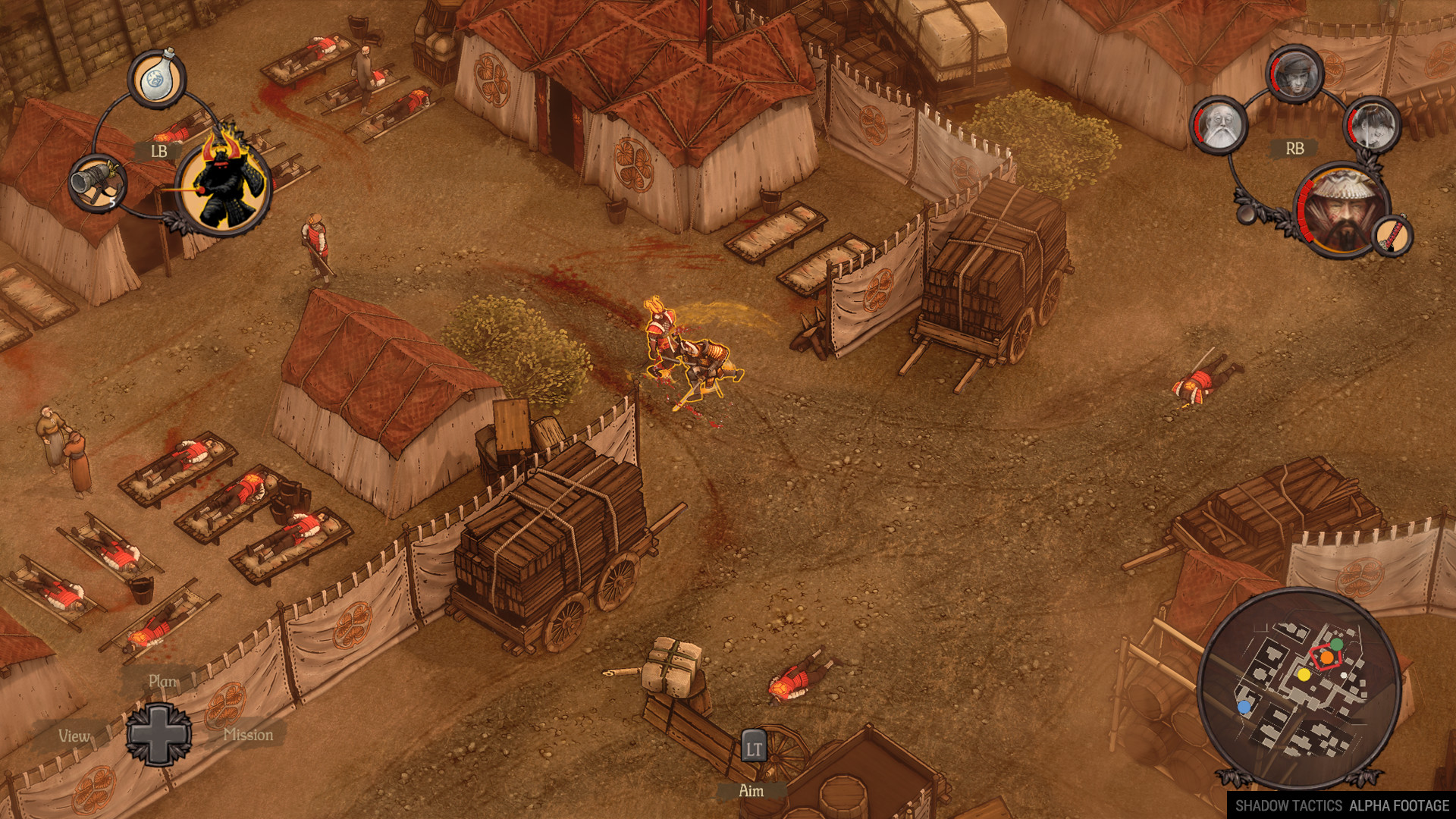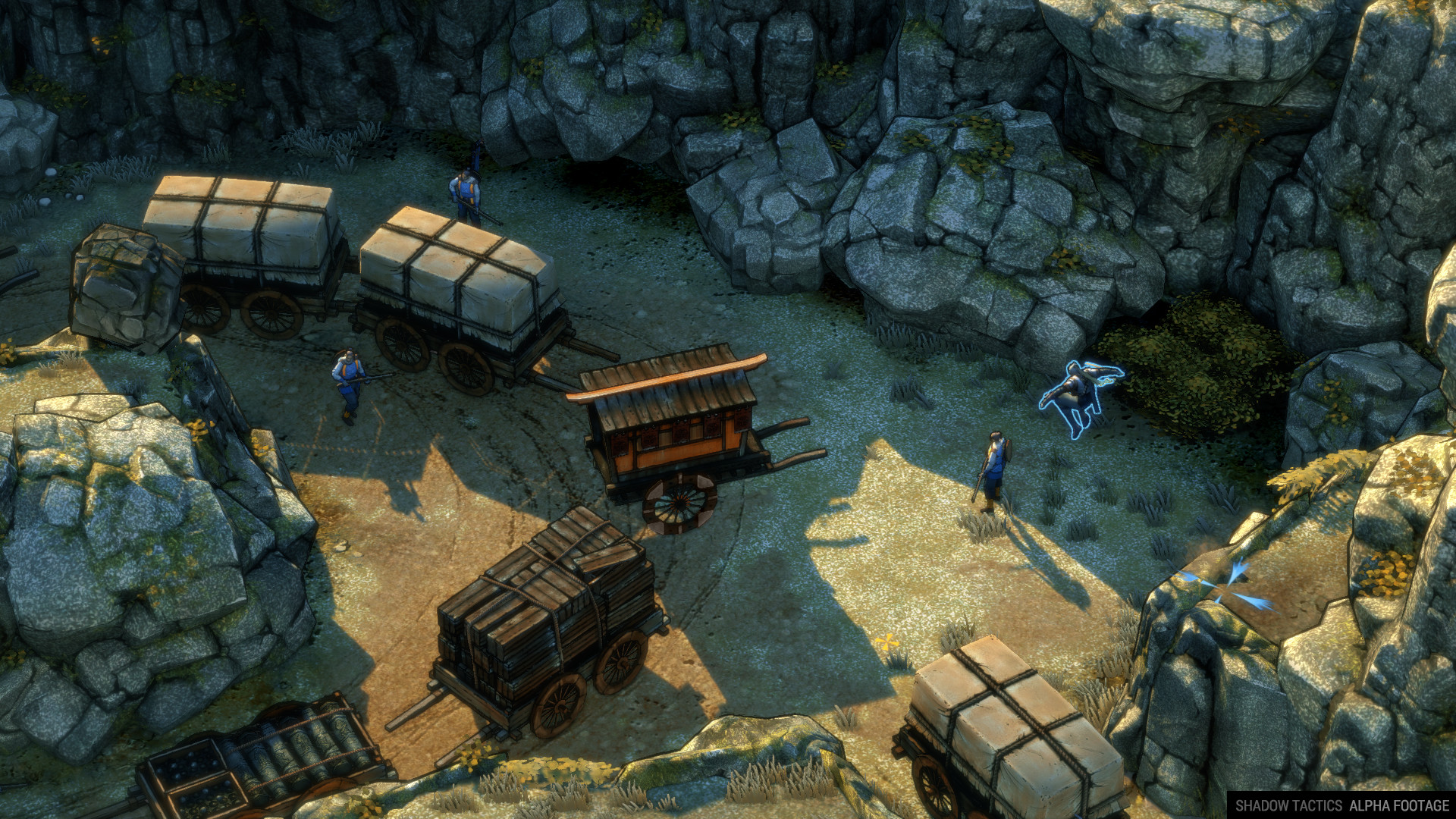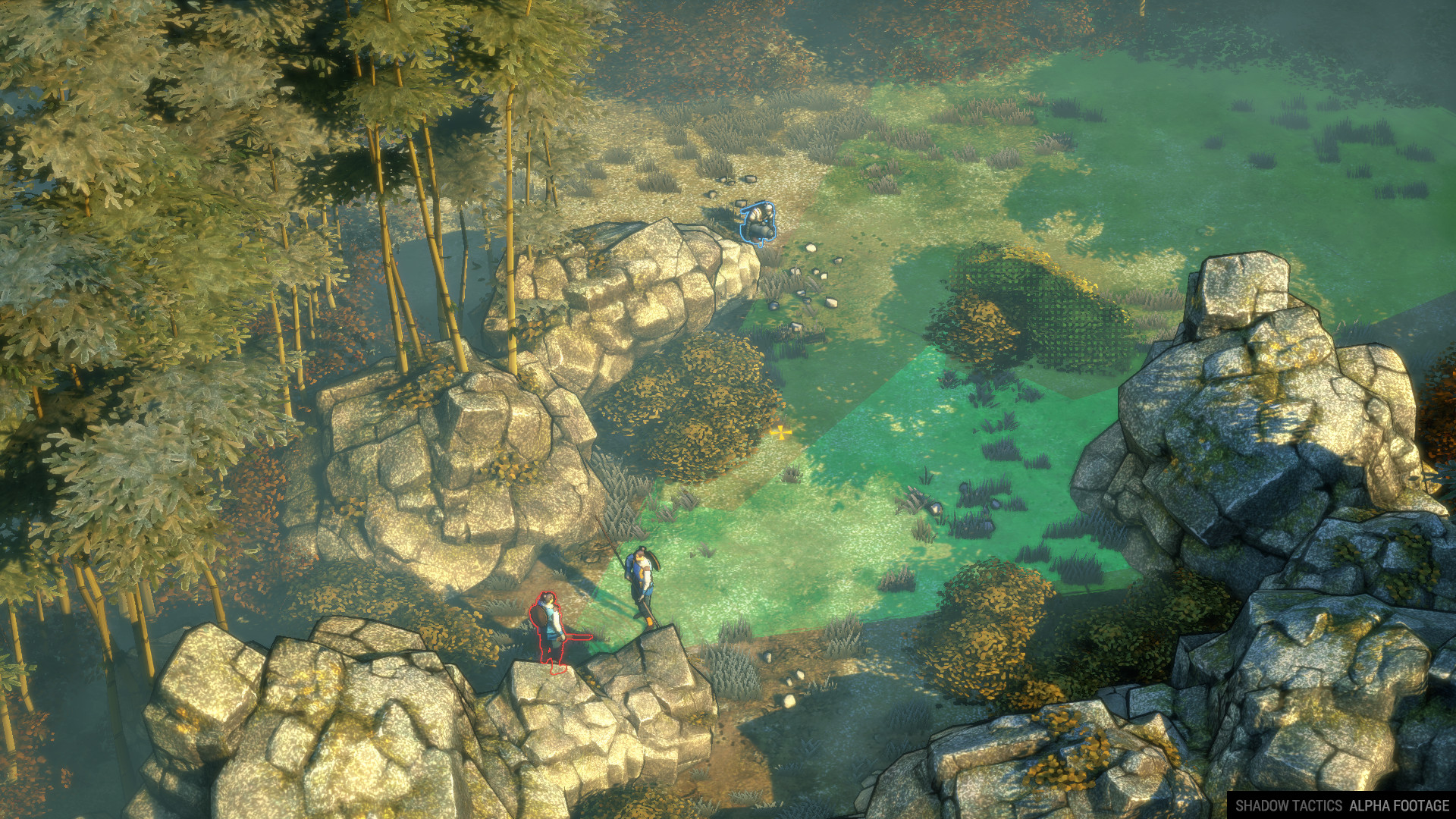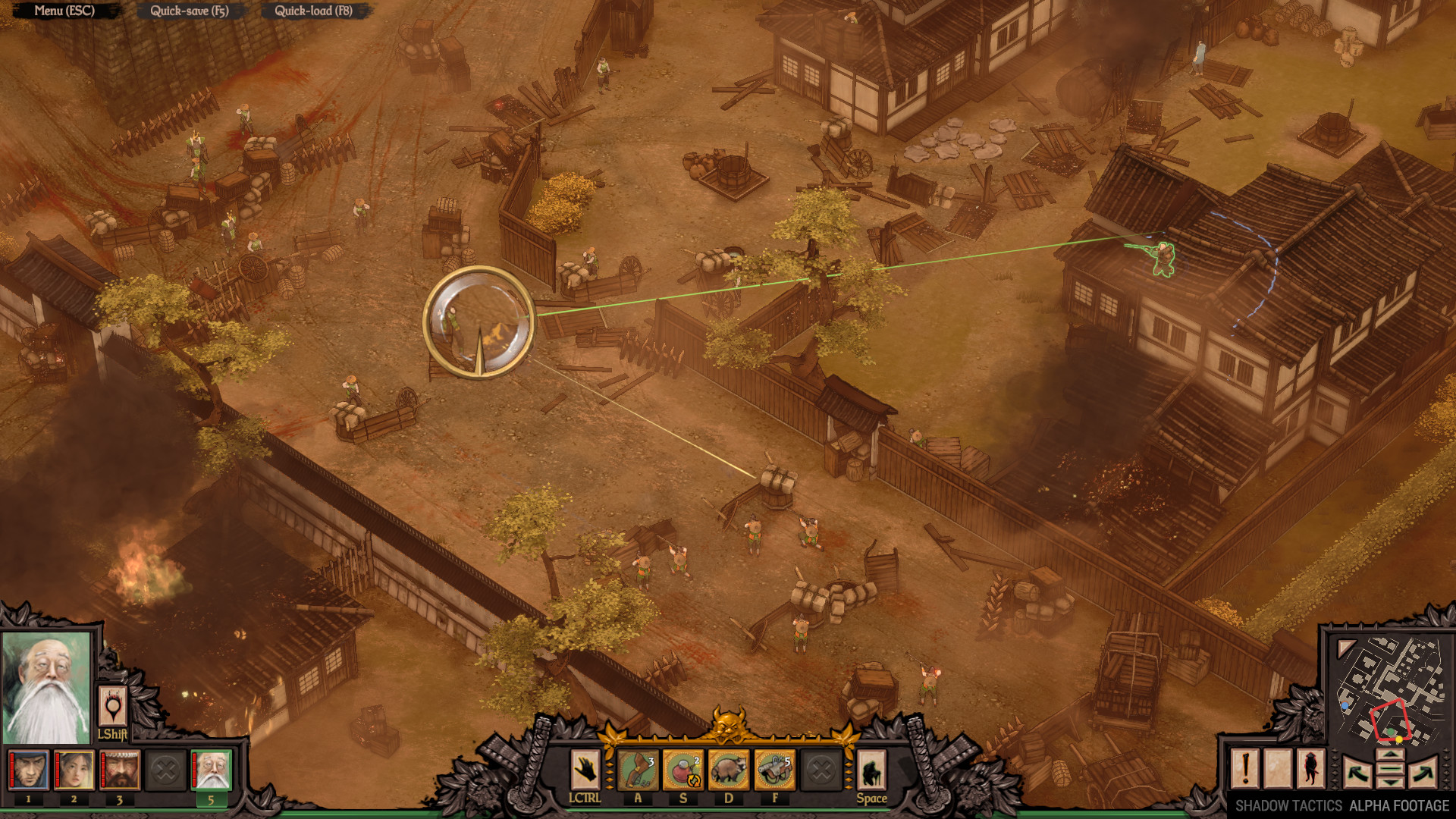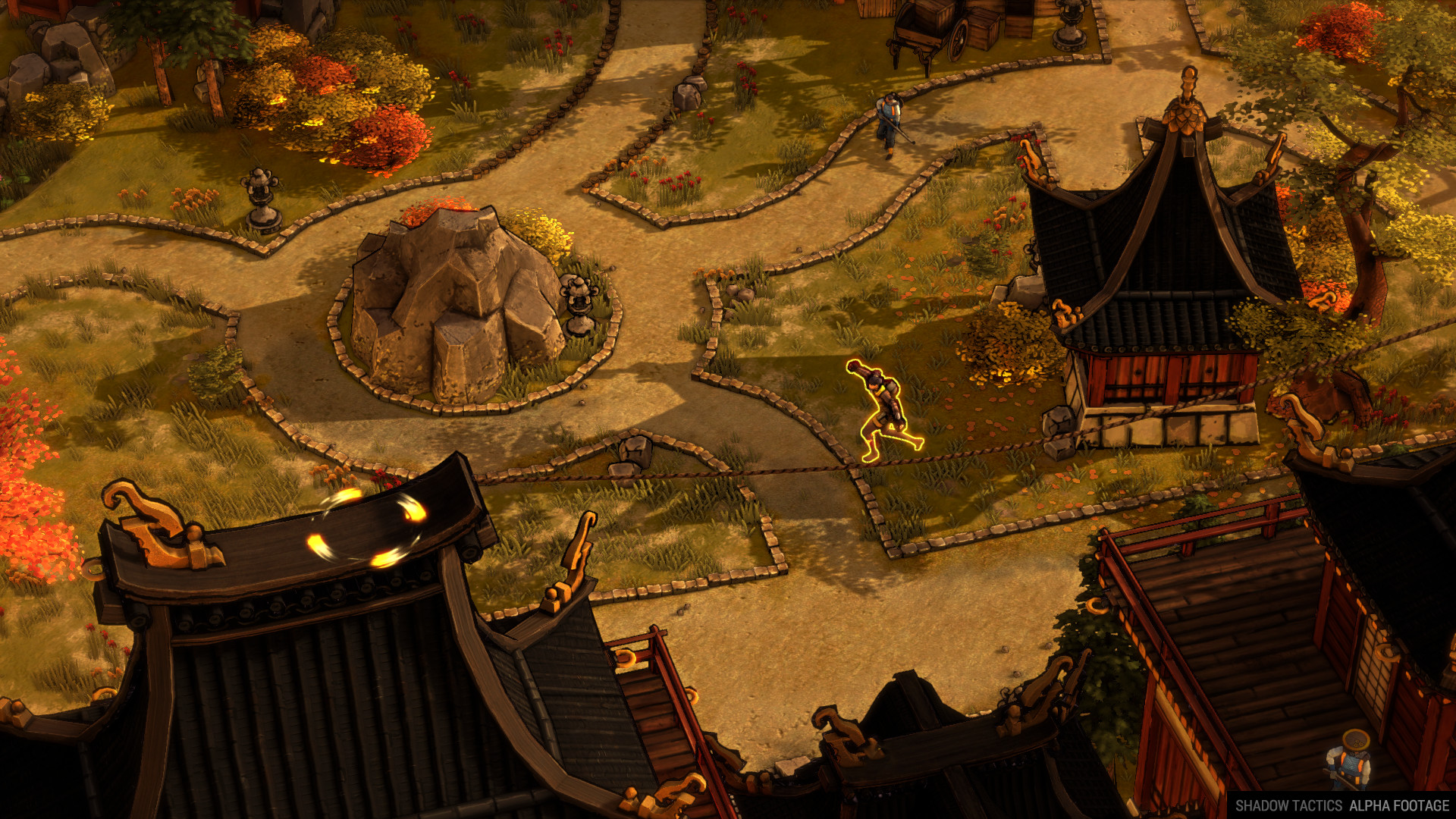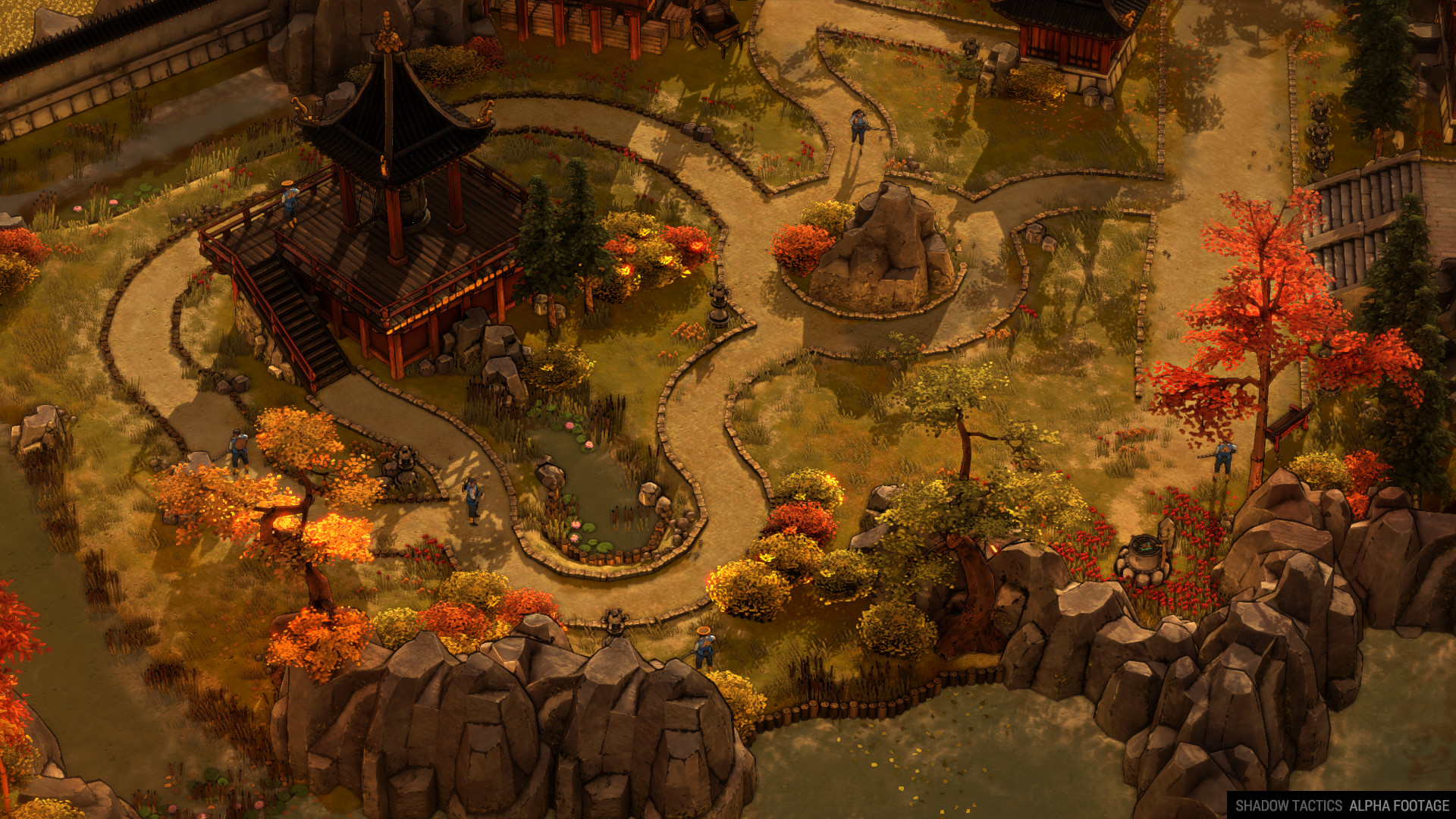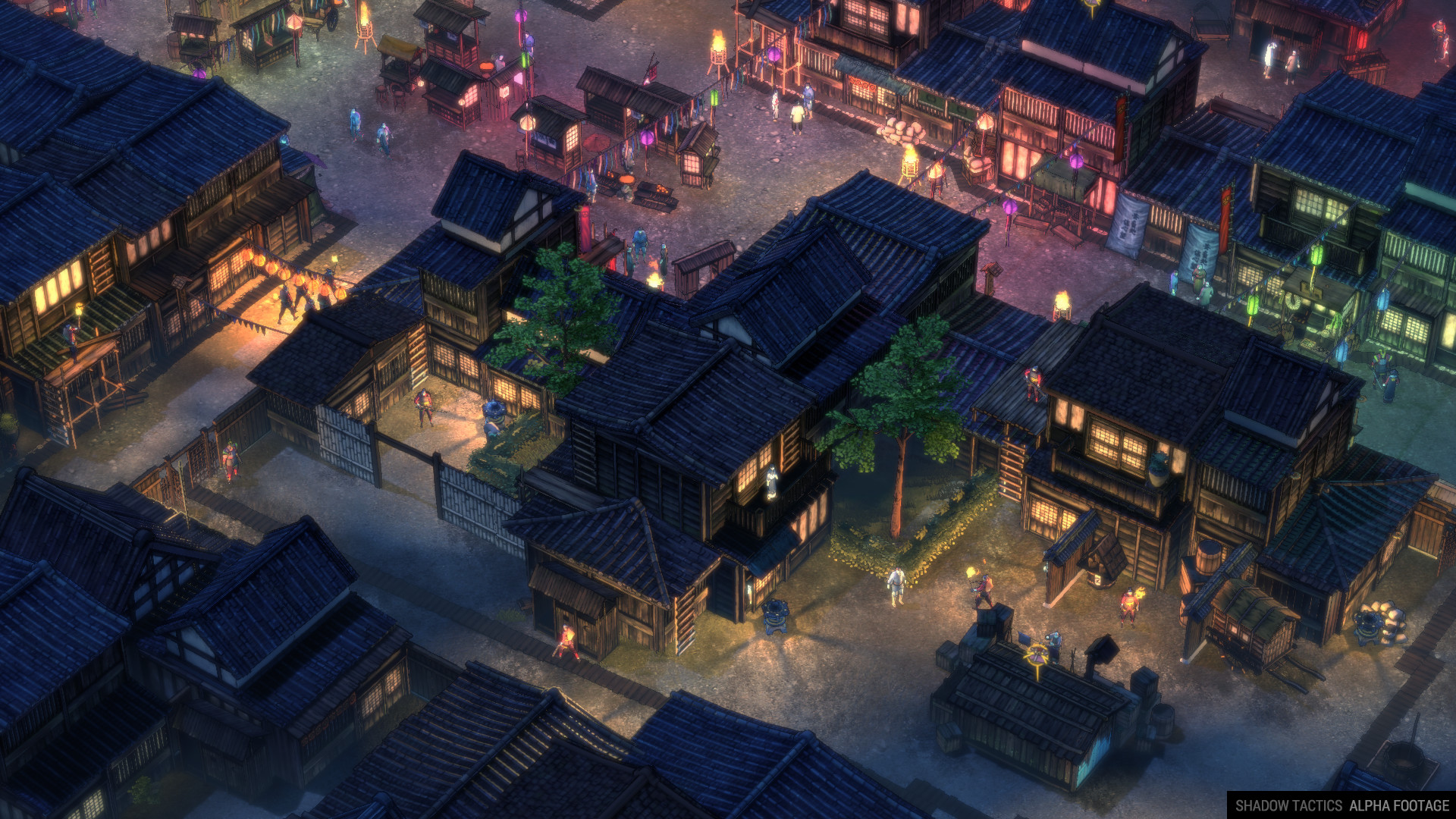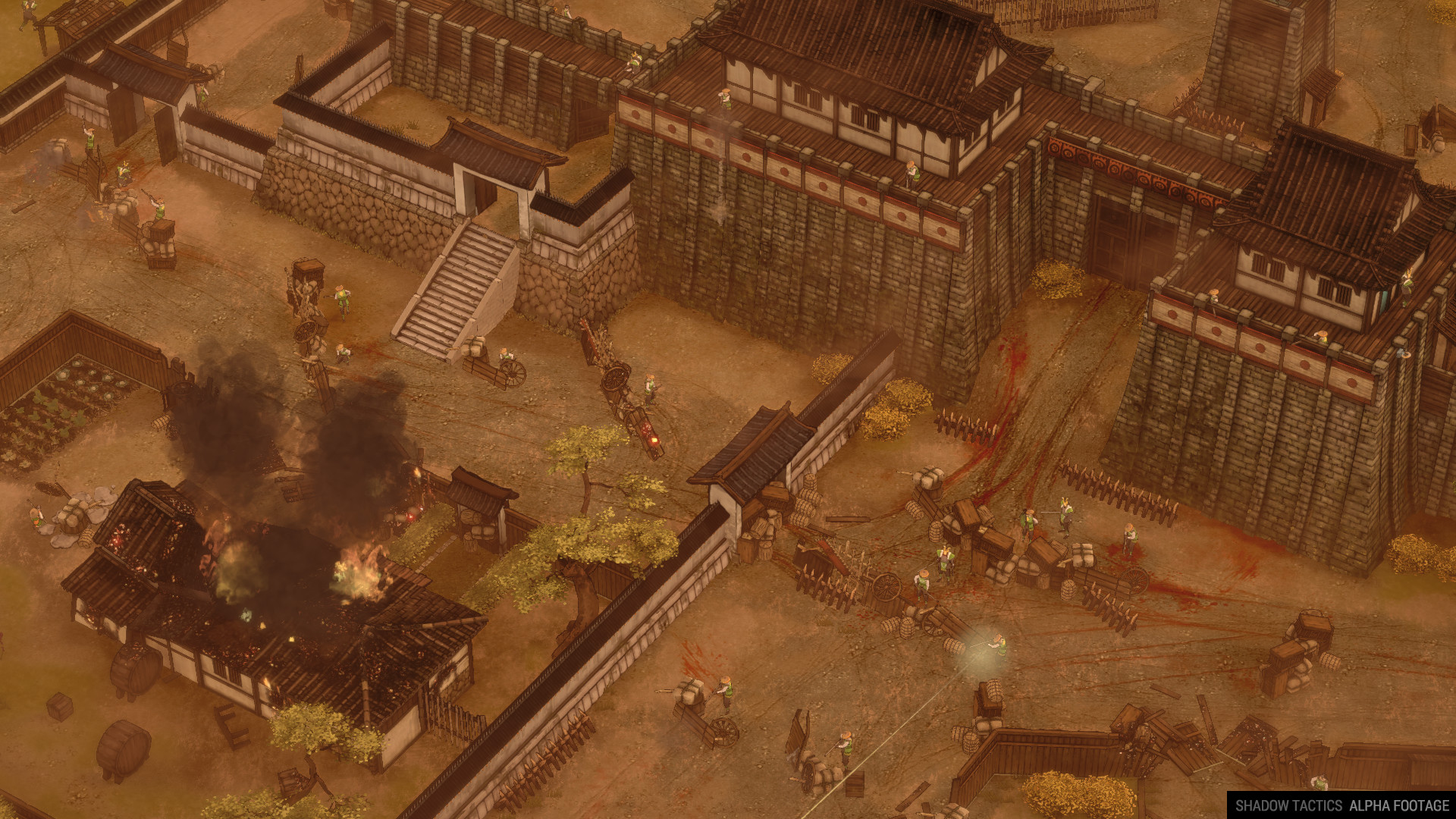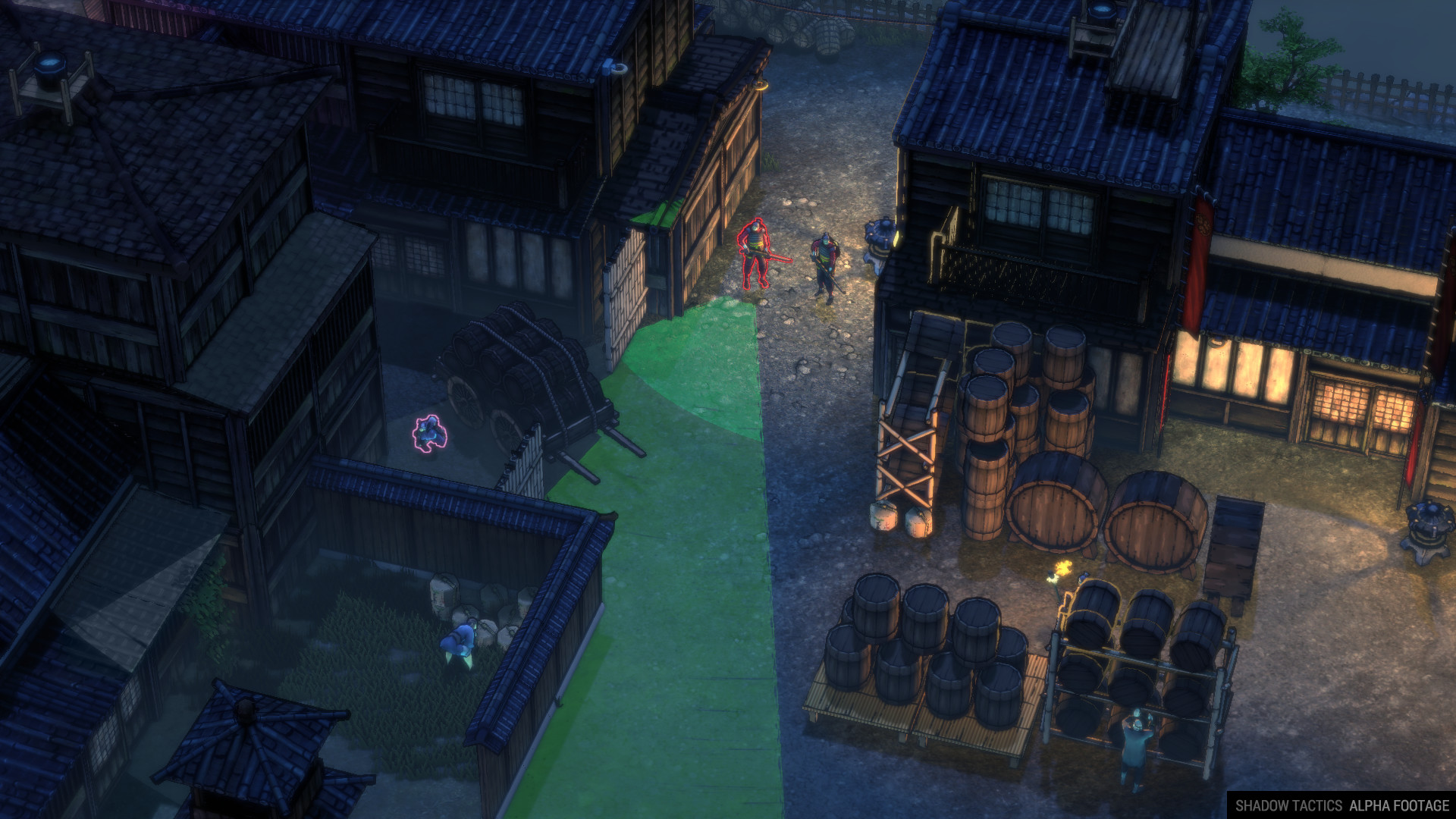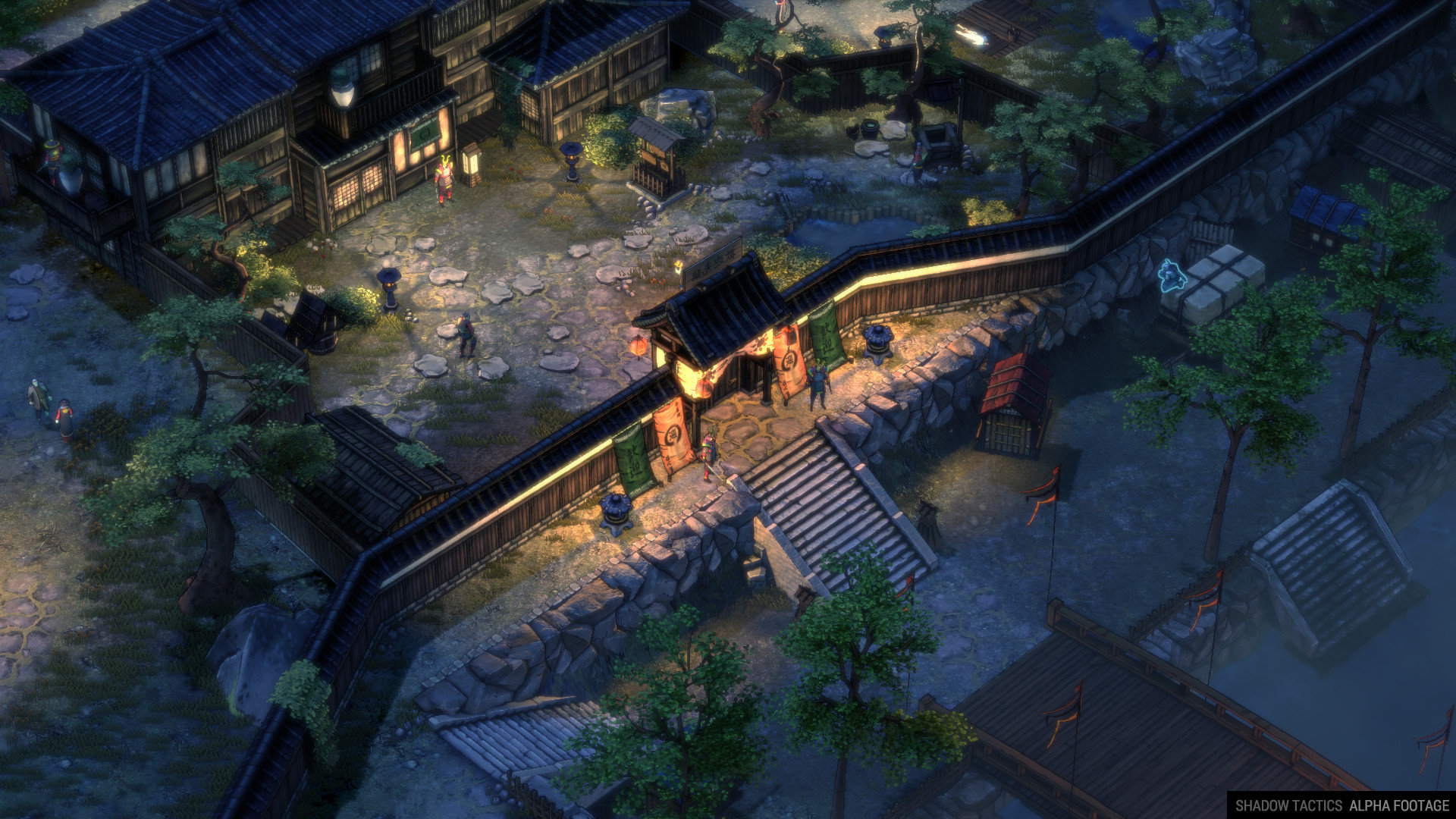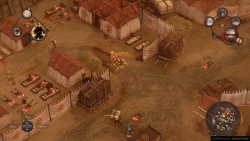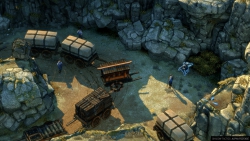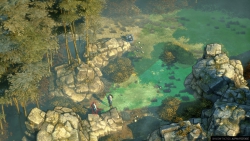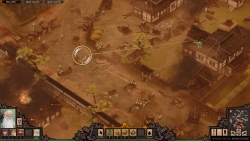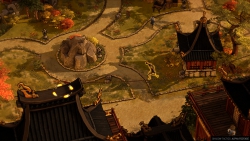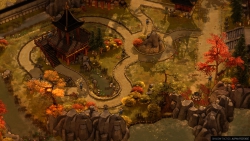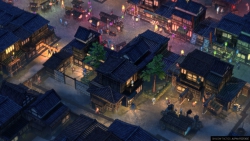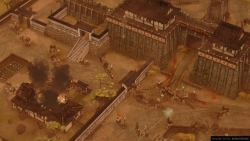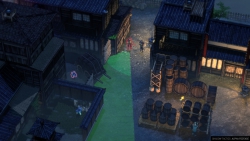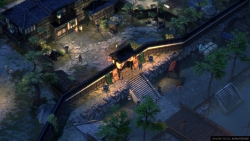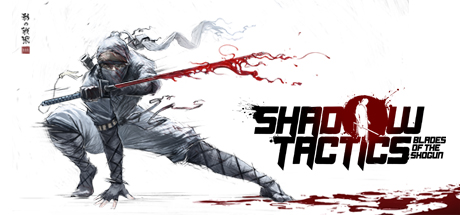Ninja: Ghost Recon
Shadow Tactics: Blades of the Shogun has a HIGH learning curve — at least for me it did. Stealth games are some of my favorites. However, this largely being an RTS, had me a little out of my element. I'm more used to your actions — or actions lack thereof — having definite repercussions and having more time to plan things out. In tactical/strategic games — at the very least — some sort of real-time with pause. (I'll get back to that later.) I found it rather difficult to discern when I should be telling my characters to crouch walk or sprint to succeed. When, how and even what would trigger a response from the AI.
Shadows is an isometric game wherein any given mission you're controlling, or rather telling up to five people what to do. If you're the type of person that loves experimenting with AI through quick-saves and quick-loads. This is the game for you. You'll make lots of mistakes. This is a difficult game even with save scumming. And, I'm aware of the slight controversy around 'save-scumming but it's quite welcome here. Of course, where I fall on the spectrum is... play how you want. How much fun you get or take away from yourself is your decision.
Tools of the trade
Tons of information is conveyed visually. For lack of a better comparison, it's very much like Mark of the Ninja. Vision cones can be displayed by right clicking on an enemy. This will then tell you where an enemy would effectively, 'immediately' see you (depending on difficulty level) and where their vision begins to fail, where small, slow movements would go unnoticed. The distance sound will travel will be displayed by a blue circle before you take action. You can even place markers that will provide line-of-sight lines and cones. Helpful when trying to make a decision to where next to move.
Shadow Mode
Without this, I'd have given up.
Shadow mode allows you to queue actions to be triggered at your volition. Either at the same time or in a specific order using hotkeys. That being said, as there is no ability to pause the action for calculated actions. Even when using shadow mode, people never stop patrolling. You're to set up actions and then wait at the opportune time to exact your plan. Then typically, you've only moments to quickly tell someone to pick up the body from an incoming patrol. It makes the game feel very 'loose' and slightly erratic. But, in a way that feels intentional.
ROYGBIV!
Everyone has their own color! They've also their own passive and active abilities. The colors help identify them when hidden as well as who is selected by the UI.
- Hayato (Blue) — The most traditional archetype. Can easily carry bodies, has a throwable shuriken that needs to be recovered. Can easily traverse water or climb buildings.
- Yuki (Yellow)— She can set traps, lure with a flute and traverse the same things that Hayato can, but has trouble moving bodies quickly.
- Mugen (Red) — A samurai. Not very stealthy, But strong and has a lot of health.
- Aiko (Purple)— She can throw dust to lower enemy vision and wear disguises, this also allows her to distract low ranking enemies and civilians through small talk. Letting the rest of your party sneak past.
- Takuma (Green)— “The End” — An old man sniper. Can't swim, can't move bodies. But he has a pet raccoon you can use to lure people around.
Upon learning the game better, each mission sets up a new setting and mechanic. Making it feel fresh, yet familiar as well as stay challenging. “Straw hats” — an enemy type — that can't be lured away from their posts, samurai that can't be taken down without extensive teamwork or a very audacious Mugen. Then it introduces how darkness affects vision cones and subsequently how torches alter even that. On top of that, just when you think you've it got it handled, it'll throw another curve-ball at you!
Each map is meticulously hand-crafted, this of course is a little sad for those who would like to see more levels beyond the campaign. But this level of focus in development makes the campaign maps much more robust. — There were times where I spent upwards of 45 minutes through trials and tribulations of seeking to eliminate a guard. A guard that was being watched by another guard, who was being watched by 3 more that were all being watched by a samurai on patrol. But, when I triggered my queued shadow mode actions and quickly switched between the characters to give an additional 3 commands to come out unscathed and undetected. It was one of the most single satisfying moments of achievement I've had in a game.
Now, I will say because the maps are so hand-crafted, it doesn't lend itself to high amounts of re-playability unless you're the type of person that enjoys doing side objectives or completing arbitrary things for medals. Such as using something in the environment or doing something oddly specific.
THE GIST:
If you like stealth, if you enjoy strategy and tactics — Why are you still reading this?
Zitat:
If you've read this far, consider following my curation —
Station Argus
This part makes no sense, is unnecessary and mostly irrelevant.
Ninjas were a surreptitious clandestine operative, the intention of the profession was such to provide tactic information, remove troublesome figures or illicit a conspiracy against foes without any official connection to a theoretical governing body. While a pirate is more of an old time-y entrepreneur with capricious scruples in the best of times, although modern day pirates are also a thing.
So, does that answer the age old question? I propose it should have never been asked.
